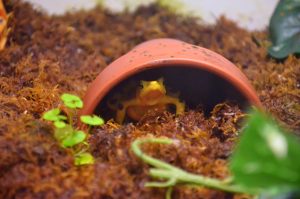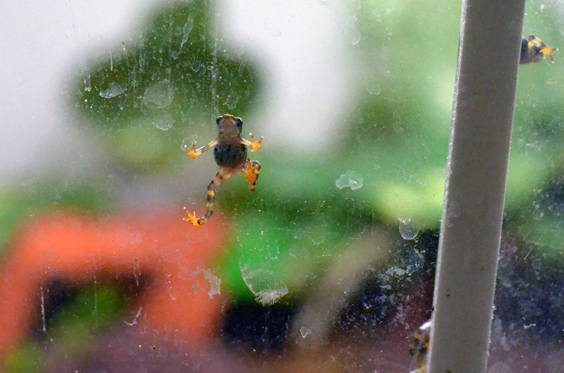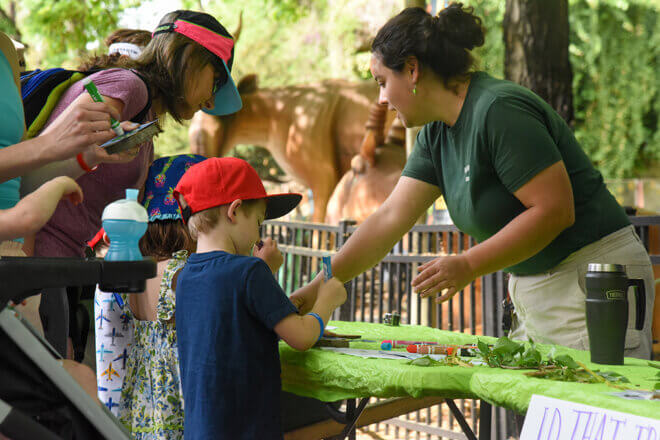In the country of Panama, the Panamanian Golden Frog (atelopus zeteki) is a national symbol in the same way that the Bald Eagle is celebrated here in the United States. This iconic gold and black amphibian can be seen in images all over Panama, but sighting one in the wild is potentially impossible. The Panamanian Golden Frog is critically endangered and possibly extinct in its natural habitat, the rainforests and cloud forests of the Cordilleran Mountains in Panama. Since the species began to seriously decline, over a decade and a half ago, The Maryland Zoo has been at the forefront of conservation and breeding efforts. Today, Panamanian Golden Frog breeding is one of the Zoo’s most established and productive conservation programs.
The Maryland Zoo works in conjunction with other AZA accredited institutions, as well as the Panamanian government, to keep this species alive and genetically diverse. It is currently breeding season, and many of the 170 tanks used for this program are occupied by frogs ready to breed, tadpoles and morphlings (the stage after tadpoles grow legs and leave the water).

Each year approximately 250 to 300 new frogs are successfully reared at The Maryland Zoo, due to a large amount of people and resources dedicated to this important conservation project. A small portion of these frogs stay at The Maryland Zoo to continue the breeding program, and the rest are sent to different institutions to become part of other conservation and awareness programs. The ultimate goal of Panamanian Golden Frog conservation programs is to maintain a population of the frogs in captivity so that if and when the factors leading to their extinction in the wild subside they can repopulate their natural habitat.
-
- Learn more on the Zoo’s Panamanian Golden Frog page






Share this article